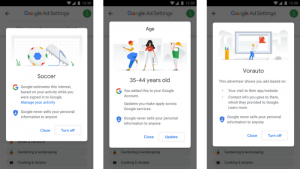— July 19, 2017

When you hire an SEO agency, you’re not only looking for search marketing experts. You’re also looking for a team to become experts on your business and the people it needs to connect with.
This understanding is pivotal to everything an agency does for you – and it starts from the moment you begin working with them. Your first task is to create an SEO brief, outlining your objectives and strategy. This process helps your agency devise the best possible strategy and it also gives you the security of having an agreed set of objectives they have to meet.
Before you can create an SEO brief though, you need to establish six key factors about your brand and what it needs from search engine optimization.
The six essentials of any SEO brief
When you’re creating an SEO brief, there are six key elements you need to make clear to your agency. We’ll look at each of these in more detail throughout this article but here’s a quick overview of what you need:
- Your objectives: What your SEO goals are, how you plan to measure them.
- Your brand: An overview of your brand, what sets it apart and where you see it going in the future.
- Your target audience: Who your brand needs to connect with now and audiences you might want to target in the future.
- Your competitors: The brands you need to stay ahead of and the ones you want to catch up/overtake.
- Your budget: Your current budget and whether you expect this to increase or decrease over time.
- Your SEO history: Everything you have (or haven’t) done with SEO up until now.
Clarifying these points isn’t only for your agency’s benefit, it’s for yours too. And you’ll probably find some of them are surprisingly difficult to define.
1. Knowing your objectives
Before an agency can put together a strategy for you, they need to know what you’re looking to achieve. Is your main objective to increase the visibility of your website, generate more leads for a specific product or are you simply looking to outsource your existing SEO strategy to an external team?
Here are some common SEO goals for you to consider:
- Increase traffic
- Lead generation
- Branding
- eCommerce sales
- Increase email sign ups
- Overtake competitors
When we ask prospective clients what their SEO goals are, we often get answers like “we want to rank on page one of Google”. And that’s fine. But you need to know why you want to be on page one because search ranking is never the end game.
You need to know why you want to be on page one because search ranking is never the end game.
If your goal is to increase sales, for example, simply increasing traffic probably isn’t enough. Slow loading times, weak content and any number of on-site issues could be getting in the way of sales, which means you’ll only be losing a larger volume of leads until you put them right.
Aside from knowing what your real SEO objectives are, you also need to know how to measure success. Once again, if your goal is to increase sales, then your main KPI is product sales. If your goal is to increase email signups, then signups are your main KPI. In either case, you’ll also have a set of secondary KPIs that help you reach the end goal, eg: traffic, bounce rates and conversions.
We know it can be difficult to pinpoint your SEO objectives and KPIs. In most cases, this is actually the hardest part of writing an SEO brief, but we’re always happy to help with this.
2. Your brand’s key info
Your SEO agency will gradually become an expert in your brand, but this will be long after they’ve created an SEO strategy for you. And that strategy will be based on everything you tell them about your brand, as well as their own internal research.
The more (relevant) information you can provide in your SEO brief, the better.
- Your website URL and any associated domains
- Existing channels (eg: Google Search, AdWords, Facebook, Twitter, Quora, etc.)
- What you sell/provide
- Your most important products or services
- Your key selling points
- Your brand image
- The top 5-10 keywords that best describe your brand
These might sound like trivial points but they’re fundamental to your SEO strategy. Your brand voice needs to shine through every piece of content you publish while your most important products/services tell us which topics, keywords and pages to prioritise.
Once again, if you’re unsure about any of the brand info you need to provide, your agency should be able to help.
3. Your target audience
Much like getting to know your brand, an SEO agency will learn a great deal about your target audiences over time. In the meantime, you’ll have to provide as much info about them as you can in your SEO brief.
At the very least, you should be able to draw up a list of general buyer personas – like married couples, undergraduate students, pregnant women, pet owners, etc.
You might be able to go a step further than this and narrow down on some basic demographic info: location, age and gender. Be careful not to make any assumptions on these, though. Only provide information you’re confident about and provide any data you have to back it up.
If you’ve conducted any market or customer research in the past, that data could be useful. The aim with these insights is to build an accurate list of interests for each of your target audiences, as they move along the consumer journey. These interests will help us choose which keywords to target, cover the right topics with your content and promote everything on the right channels.
4. Your SEO competitors
Knowing who your real SEO competitors are is surprisingly difficult. It’s not only your business rivals you need to think about but also your search competitors – and you might be surprised by some of the results.

Knowing who your competitors are is only part of the story, though. Next up is competitor analysis to see where you stack up against your rivals and put together a strategy to strengthen your position.
5. Setting your SEO budget
Setting an SEO budget might sound straightforward, but there’s quite a lot to consider. If you’ve worked with SEO agencies before, you’ll probably know some of the things you have to weigh up.
As with any kind of marketing budget, it’s not how much you spend that’s most important; it’s what you make back from it. There’s nothing wrong with spending more to make more.
With this in mind, the first thing you need to consider is your SEO objectives we talked about earlier. Increasing sales should generate a higher ROI than increasing traffic, for example. Chances are, you would want to come up with two different budgets for each objective.
You also need to consider where your SEO budget ends and the rest of your marketing budget begins. Content marketing and search optimization are difficult to separate these days and everything you publish gets promoted on social media – most of which requires paid ads.
6. Your SEO history
The final thing your SEO brief should include is your full search marketing history. Above all, if you’ve ever had any search penalties or warnings from Google, we need to know about them.

Google penalties that might have previously affected your site
Likewise, if you’ve worked with another agency in the past, everything they did should to be considered when devising your next strategy. Most of this information can be revealed via SEO audits but the more info you can provide upfront, the better.
There are also things no SEO audit will tell us. Like why you stopped working with previous agencies and what you expect to be different with the next one.
Even if you’ve never actively applied search marketing to your site, it’s been building up an SEO history since the day it was launched. If you happened to have bought an existing domain name, rather than creating an original one, this will come with an SEO history that predates your brand – so make this clear on your SEO brief.
The key to any good SEO brief is the information you provide your agency. Generally speaking, more detail is better – but this is only true when the info you’re providing is relevant and accurate. You’re not on your own when it comes to writing an SEO brief, though. Any decent agency will be happy to help you pinpoint the info they need.
Digital & Social Articles on Business 2 Community
(37)
Report Post






